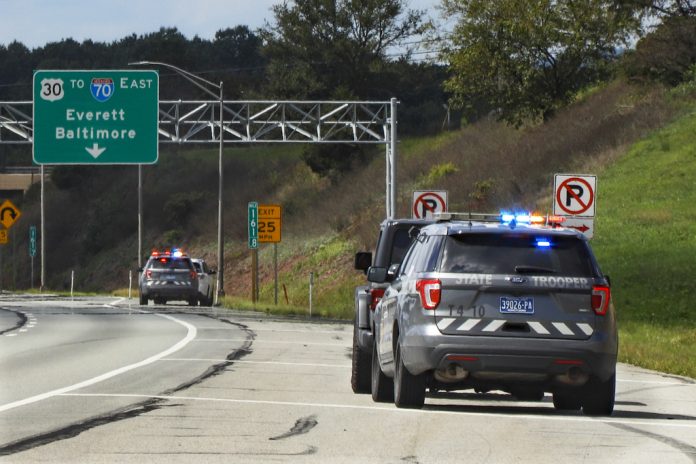HERSHEY, Pa. (AP) — Pennsylvania drivers were pulled over and cited by state police last year at roughly comparable rates for various races and ethnicities, according to information about 450,000 vehicle stops that was made public on Wednesday.
“The findings across multiple analyses demonstrated no substantive racial and ethnic differences in the initial reason for the stop by the Pennsylvania State Police,” Robin Engel, a researcher now at Ohio State, said in releasing the $194,000 study at the state police academy in Hershey, Pennsylvania.
Researchers also found that trooper decisions about how to enforce the law after they stop someone are most strongly based on legal factors and not the drivers’ or troopers’ race or ethnicity.
However, troopers in the field were slightly more likely to engage in “discretionary” searches of Black drivers’ vehicles than those of white or Latino drivers when the drivers’ criminal histories were factored in, the report said.
Troopers do not ask drivers their race or ethnicity but record that information based on their subjective perceptions.
The state police and the American Civil Liberties Union in Pennsylvania two years ago agreed to settle a federal civil rights complaint alleging that seven troopers targeted Latino drivers for vehicle stops and detained them to check their immigration status. The 10 people who sued, all Latino, said troopers demanded “papers” from drivers and passengers.
To settle the case, the Pennsylvania State Police enacted a regulation prohibiting troopers from stopping anyone based on immigration status, citizenship or nationality, and stopping them from questioning people about their immigration status unless answers are needed for a criminal investigation unrelated to civil immigration laws.
The new report on traffic stops echoed last year’s findings that racial and ethnic disparities in Pennsylvania State Police traffic stops have become rare, likely because of increased scrutiny and supervision in the field. Authorities have also changed training tactics and prioritized treating people equally.
In an effort to make their work more transparent, state police have also been expanding the use of body cameras. Nearly half the force is now equipped to wear them.
Wider information about Pennsylvania traffic stops may soon become available. A law passed by the Legislature in May mandates other local police departments that serve populations of at least 5,000 people also must collect and make public traffic stop data. The measure takes effect at the end of next year.
Rep. Napoleon Nelson, D-Montgomery, chair of the Pennsylvania Legislative Black Caucus, called the newly released data “neither comforting nor extremely surprising.” He said the study will be closely reviewed and that information from smaller departments is needed to form a full picture.
“We don’t know the regional differences in statistical analyses yet, we haven’t seen that,” Nelson said. “There’s a lot we don’t know.”
A review of nearly 4.6 million vehicle and pedestrian stops by 535 California law enforcement agencies in 2022 found that Black people accounted for nearly 13% of traffic stops in that state, where they make up about 5% of the total population. A 2022 study in Massachusetts found no evidence of racial disparity in the decision to pull over drivers, but Hispanic and Black motorists were more likely than white drivers to be cited and white drivers more likely to get off with a just a warning.
In Missouri, a 2018 review concluded African-American drivers were 85% more likely to be pulled over than whites and that white motorists were less likely to be searched than Black, Hispanic and American Indian people but more likely to be caught with contraband. The report also concluded that 7.1% of Hispanics and 6.6% of Black people were arrested after stops, compared to 4.2% of whites.
Source: post





